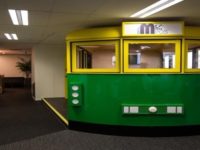Increasing sales and reducing costs, boosting profit margins, and understanding your customers are all key goals for small-business owners. As a small-business owner, you make lots of decisions daily that affect the bottom line. Once, decisions around product, price points, inventory and staffing were made with a decent dose of guesswork. Now many SME businesses use point-of-sale or POS data systems such as ours as their main way of tracking the sale of products and services.
POS software does a lot more than make the sales process more efficient. Here are just a few ways you can use your POS data to power your business:
1. Analyse sales performance and profit margins
The sophisticated POS systems today have made it easier and simpler than ever to analyse daily sales performance. Using it to work out how items are selling against their profit margins, and adjusting where necessary. Once you have this knowledge, you can promote menu items that have a high profit margin, or reduce the costs on items that sell well but have a low profit margin. You could also incentivize your employees to promote slow sellers with a high profit margin.
2. Purchase with insight
Too much or not enough of a product can be a major drain or missed opportunity on revenue. By analysing your sales reports against inventory management or stock purchase lists, you can be smarter about how much of one product you are buying to control your variance and know if you need to negotiate pricing with any of your suppliers. It can help you identify what you should be promoting, how to position hot sellers, and if any products or dishes should be taken off the menu completely.
3. Roster smarter
Analysing your POS data can help you determine when the peak times are for the business; and then ensure your stock levels and staff rostering aligns with higher customer demand. So, if your trade has consistently been 30 per cent higher around new financial year, you can hire an additional staff member to cater to the short term burst of business. Or peak time for dinner service varies between seasons, you can adjust staff numbers accordingly.
4. Market to your key customers
Our research shows that attracting and retaining customers is a key issue for hospitality business owners, but most aren’t using their POS to identify customer insights. Your POS data could help address this issue by pinpointing loyal customers, their spending habits, what items they’ve purchased as well as when and how often.
5. Improve staff efficiencies and up/cross-selling skills
Utilising unique staff logins can help identify which staff are most efficient at serving customers, if any staff are consistently making order errors, and which are most skilled at upselling or cross-selling; all through sales data captured through the POS. From there, you can see which staff require additional training, when to incentivize, and which should be rewarded.
POS technology is much more than a glorified cash register – it’s a tool that can help businesses of all sizes realise the potential of data. The smart ones know this and are moving away from “gut-feel” decision making to a data-driven approach.
Sean O’Meara, CEO, Impos














